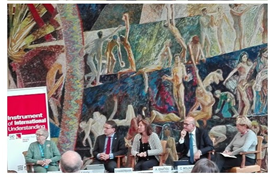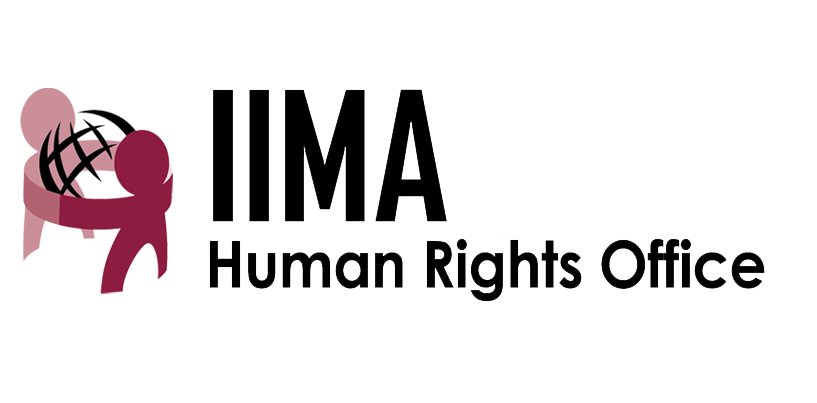
How can we move forward for women’s leadership?
Michael Møller, Director General, UNOG, and Geneva Gender Champion gave his welcome remarks. The panel was moderated by Sigrun Habermann, Chief, Cultural Diplomacy and Outreach Section, Alternate UNOG Gender Focal Point. The other panelists were Christian Friis Bach, Executive Secretary of the United Nations Economic Commission for Europe, and Geneva Gender Champion; H.E. Mr. Andreas Ignatiou, Ambassador and Permanent Representative of the Republic of Cyprus to the United Nations and other international organizations in Switzerland, and Geneva Gender Champion; Cécile Molinier, Former UNDP Director, Geneva Speakers and Torild Skard, Norwegian psychologist, senior researcher, politician and author.
Torild Skard started her presentation providing a slideshow of gender parity at United Nations since 1945 when the Charter of the United Nations declared equal rights of men and women and human rights and fundamental freedoms for all without distinction as to race, sex, language or religion. However, it was still evident that the UN Conferences were male dominated.
The Declaration of Mexico in 1975 confirmed the unequal treatment received by women and recognized the urgency of improving women’s status so as to enable them to have the same opportunities as men. Thus, women can participate actively in the development of their countries and in the attainment of world peace.
Then came the Beijing Declaration and Platform for Action of 1995 which is considered the most progressive blueprint ever for advancing women’s rights. It envisioned that with gender equality and women’s empowerment humanity will be empowered. It focused on developing a strategy for change to eliminate all obstacles to women’s full and equal participation in sustainable development and for women’s equal access to and control over resources. Today, the Sustainable Development Goal n. 5, aims to enhance gender equality and empowerment of women and girls through participation and equal opportunities for leadership, the decision making in political, economic and public life.
Since 1955 to 2015 women to rise to the top must not only be exceptionally well qualified but must have a democratic political system where active women’s movement demand gender parity in the political leadership.
Globally, political parties are extremely male dominated with only 10 per cent women on the average in the executive leadership. They promote the interests of men, prefer male candidates for election, particularly to high positions, uphold voting systems favoring men and assist in the financing and media coverage of male politicians. To counteract these undemocratic processes it is essential to adopt affirmative measures such as competence and confidence-building of women, consciousness-raising of men, quotas and electoral reforms in addition to continuous research and analyses of the political system and equality policies, involving top and bottom. There are different categories of women, some conformed to the norms and values of male-dominated politics and acted in the same way as their male colleagues, while others, on the contrary, challenged male domination and explicitly promoted woman-friendly policies. About half of the female leaders, however, compromised between men’s and women’s interests, trying to look after both.
In spite of the difficult circumstances, women politicians made a difference in the governance of the nation. But the difference will be greater with more women in political office and stronger women’s movements: training, consciousness-raising, counter reaction to dominance techniques and change of attitude are required; women’s rights champions and organizations, gender units and women’s networks are essential.
Both men and women must act to promote gender equality, particularly men in leadership positions and also in this context education plays an essential role.

